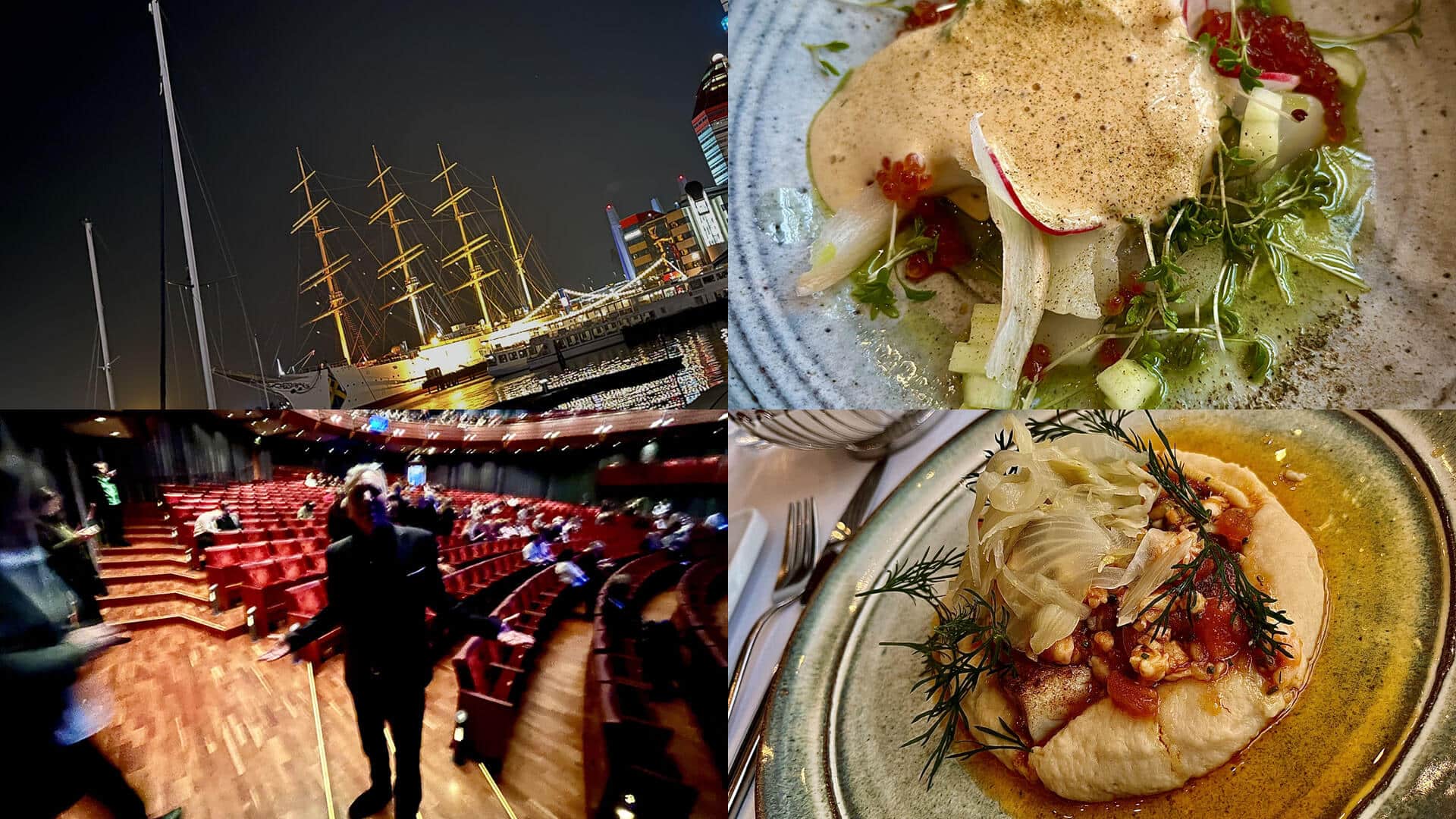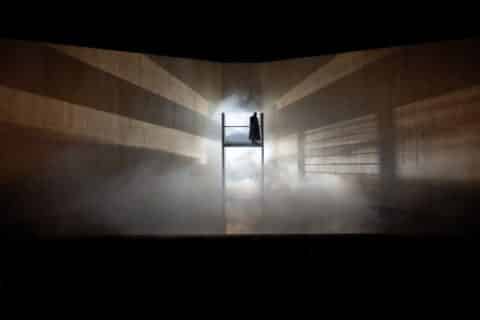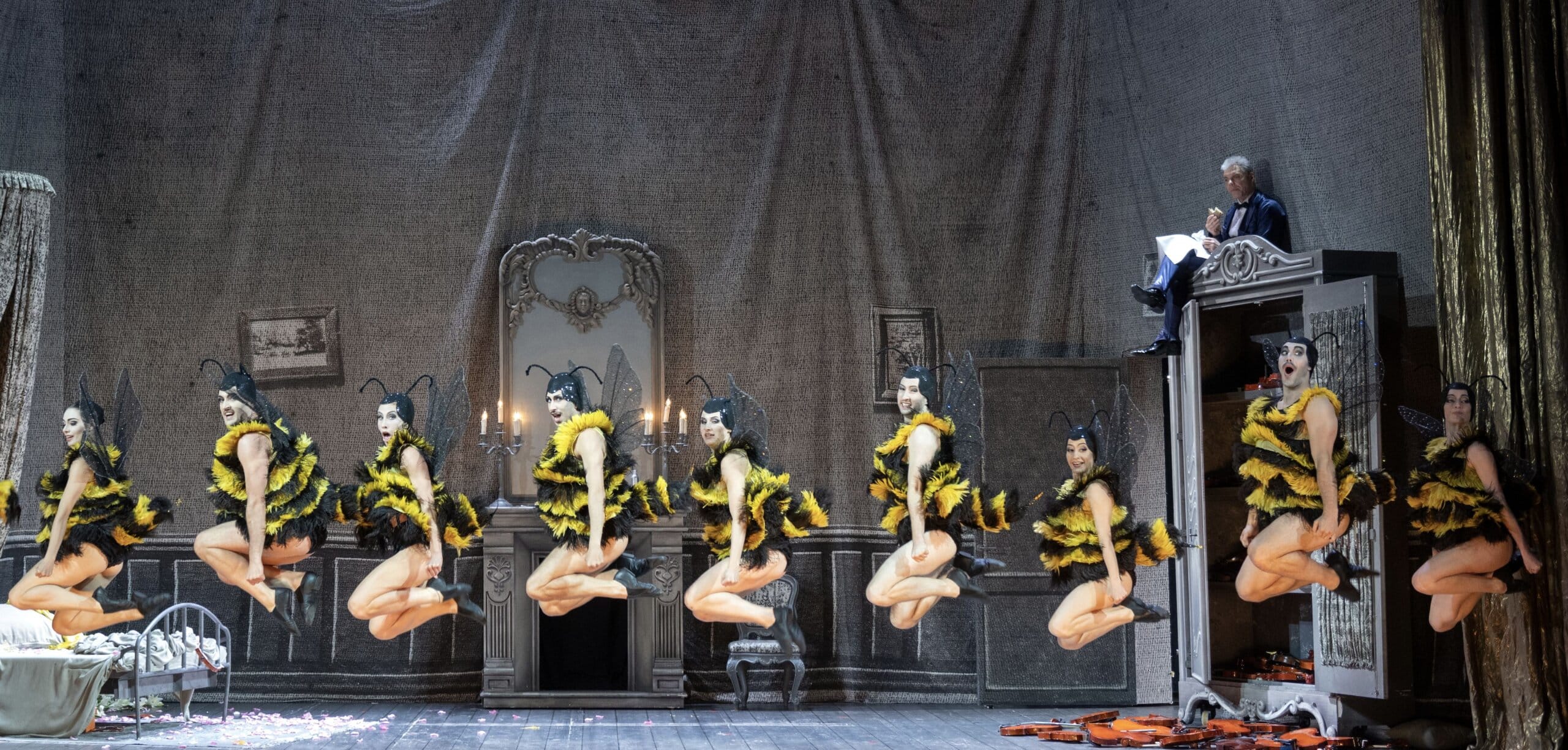DIE SCHWEIGSAME FRAU • GOTHENBURG
★★★★★★

Photo: Lennart Sjöberg
REVIEW DIE SCHWEIGSAME FRAU: BARRIE KOSKY RULES
It’s simply fabulo what goes on in star director Barrie Kosky’s staging of Richard Strauss’ Die Schweigsame Frau (The Silent Wife) at Göteborg Opera.
A veritable firework display of comic riots, combined with a musical gorgeous delivery of Strauss’s dazzling score, which in several sequences reaches the sublime in operatic composition.
Soloists and orchestra alike are at Salzburg Festival level in this production of Strauss’s rarely performed comedy-opera, which, under Barrie Kosky’s irrepressible direction, is elevated to the heavens in a marvelous clash of Mel Brooks, Muppet Show and poignant love sequences with music so beautiful that your heart skips a few beats.
The story, with a libretto by the dazzling writer Stefan Zweig, is buffa with references to Mozart and Rossini. Figaro, The Barber and the like.
A lonely and grumpy naval officer, Sir Morosus, with zero tolerance for noise, wants a Silent Wife to share the autumn of life and his considerable fortune with.
The officer confides in his barber, who, like the man from Seville, turns out to be a talented fixer who can make things happen, and probably thinks he can provide some suitable candidates for a quiet marriage.
When Morosus’ nephew suddenly bursts into the story, things get complicated. The reunion is so cordial that the officer comes to promise him the entire inheritance.
However, it turns out that the nephew has dropped out of his bourgeois life and become an opera singer (how frivolous is that). He has even taken up with an opera company that loves to perform and could use the money.
At the thought of the noise that surrounds an opera company, Morosus regrets it and cancels the inheritance.
With the barber’s cunning help, a plan is now set in motion to provide the naval officer with a quiet wife through a sham marriage, which by its ‘cancellation’ will nevertheless channel the money into the pockets of the opera nephew and his frivolous friends.
A complicated operation, but one that seems to be realized with the help of the opera company’s singers in countless disguises, and may even succeed in teaching Morosus to rediscover the love of life.
Act 1 is based on a dazzling directorial idea that is so grand and straightforward that I don’t understand why nobody has got it before. Well, Peter Langdahl could actually have got it, it’s just his style.
The opera company brings out their full costume arsenal, which means that we now have around 30 of the most iconic characters in opera history on stage at the same time.
Rigoletto with his jester’s hat, the bullfighter from Carmen in full regalia. Brunhilde with her super-Wagnerian winged helmet. A coughing Traviata with a bloody handkerchief. Madame Butterfly in white make-up and rosy cheeks. Turandot with über-Chinese headdress. Egyptian gods from Aida led by Anubis in his sinister jackal helmet. Knight Lohengrin with white swan. Salome with severed head in her arms. Falstaff, fat, goofy and adult-bullyingly sidetracked…..
It’s a sight to behold, and hilarious when, for example, Wotan can’t keep his hands off Tosca, and several people get into a bit of an argument within the group as the story’s madcap main plot develops and the master plan takes shape.
It’s clear that Kosky has enjoyed himself, and the result is marvelous.
Act 2 establishes the planned sham wedding as the comedy turns to sequences of poignant love, with the musical qualities of the opera coming to the fore under Yoel Gamzou’s sensitive direction and interpretation.
Act 3 opens with one of the most ostentatious scenes changes I have seen in a long time. The naval officer’s abstract abode opens like the lid of a shoebox, causing a flood of gold coins to rain down on the stage, while the new officer’s wife has gone bimbo crazy and is in the process of transforming the home into a wet dream of pink.
The applause rains down on this gem of creative theatre technique.
Kosky’s intelligent take on comedy is elementally entertaining, even though more than 3.5 hours of running time, until the divorce goes sour, Morosus collapses in shock, wakes up to the whole scam being revealed, and the good mood spreads. Great is the music, as he says, especially when it stops.
Anders Lorentz is excellent in the lead role with his convincing bass-baritone, while Sofie Asplund as the cheating wife shows great dramatic and vocal energy, and probably deserved a melodic hit aria or two in the opera’s unusually varied composition, which constantly takes on new colors according to lines and moods.
In short, this is an opera evening far beyond the ordinary. And if you want to indulge your interest in opera, it’s off to Gothenburg immediately, where this gem can be seen until 6 April.
Six stars from Det Sku’ Du Se.

GOTHENBURG LIGHTNING TIPS
Affordable and slightly fun accommodation in Gothenburg can be found on the largest sailing ship built in the Nordic region.
The Barken Viking is a 108-metre, four-masted giant, docked as a hotel ship in the harbor just 250 meters from Gothenburg Opera. The ship, which has sailed to Australia and South Africa, has a metal hull and was built at B&W in Copenhagen in 1906. Stay in a centrally located cabin with porthole and breakfast in the galley. Beautifully lit by night.
The Gothenburg Opera’s restaurant surprises with its good quality and a fine harbor view.
The chef’s recommendation, a theatre menu for 596, – Swedish excl. wine pairing was started with carpaccio of smoked scallop with soy marinated roe of trout in a sabayon sauce on browned butter, and was a real treat.
In the glass came a good Weissburgunder from Pfaltz that was completely gone before the next dish came on the table. A beautiful piece of Norwegian strei, a migrating Arctic cod, served with shellfish in sauce vierge (virgin sauce on olives, lemon, chopped tomato and basil.
Accompanied by a surprisingly good eco/bio Riesling called Vibrations from Alsace.
The dessert was served during the break as a sugar supplement in the form of Baily ganache and mocha pannacotta together with an excellent glass of muscatel from Catalonia.
An alternative pre-dinner option, which I only discovered too late, were the colossal and highly tempting prawn sandwiches served in the Opera Bar on the second floor of the high-ceilinged foyer. That will be next time.




